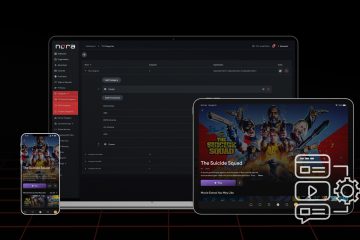Table of Contents
- What is OTT App or Service?
- Are You Down With OTT?
- Over the Top Applications Have Been Around for Years
- OTT Applications aren’t Relegated to Television Only
- Why Does OTT Matter?
What is OTT App or Service?
Are You Down With OTT?
Hello, and welcome back to our blog. Here at Setplex, we make it our mission to be up to date on the latest happenings in the Internet Protocol Television world. With the IPTV industry growing as rapidly as it is, it is important for both consumers and content providers to stay as informed as possible.
One aspect of IPTV that is becoming more affixed in the daily lives of millions of individuals is over-the-top applications. These applications help to deliver media content in the form of streaming television shows, videos, and music. In today’s post, we are going to focus on the history of OTT applications, the effect they are having on traditional media businesses, and the potential future of OTT. Continue reading below to learn more.
Over the Top Applications Have Been Around for Years
When discussing Over The Top applications, it is first important to understand exactly What is OTT. Definition What is OTT application or service? In the simplest of definitions, OTT applications are any application or service that provides a product over the internet while bypassing traditional media services.
These applications are usually related to media and communication services and are generally provided at a lower cost when compared to the traditional method of delivery. For example, let’s say you want an original Netflix series through your internet connection, and said connection is provided by Comcast.
While you are utilizing the internet services of Comcast you are technically consuming media through an OTT television application (Netflix) that is not directly owned by or affiliated with Comcast. In essence, the media is delivered “over the top” of the internet provided by Comcast, without Comcast having any control of the media being delivered.
OTT Applications Aren’t Relegated to Television Only
A few of the most famous examples of OTT television applications are Netflix and Hulu which utilize the internet to distribute media outside of the control of the major cable and satellite providers. However, Netflix and Hulu are not the only examples.
OTT apps have grown to include multiple applications related to communication services. An example of this comes in the form of the texting application Kik. Kik is a messaging application downloaded by individuals to communicate with others who use the app.
So, while an individual may have a Verizon Wireless phone, they are using Kik instead of the native texting app. Kik essentially piggybacks off of the existing internet infrastructure made available by Verizon Wireless to provide their users with a way to communicate with each other outside of the sphere of their wireless provider.
This trend in using ISPs to provide services for third-party OTT applications is only expected to continue and, as more consumers demand the ability to cherry-pick the content they wish to see, over-the-top tv applications are poised to become a booming digital market.
Examples of OTT services, applications, and content
What is OTT or Over the Top content?
In broadcasting, OTT content is video, audio, image, and other media content delivered over the Internet or television without the involvement of multiple system operators in the control or distribution of the content.
Internet users access Over the Top content through internet-enabled devices such as
- Smart TV platforms. The best Smart TV platforms are Samsung, Sharp, Sony, LG, Philips, Apple, and Android TV
- Mobile devices (such as iPhone, Android, and Windows)
- Video game consoles ( such as Xbox One, Wii U, Nintendo 3DS, PlayStation 4 or PlayStation Vita)
- Tablets, laptops and desktop computers (including PC, Linux, and Mac)
- Set-Top-Boxes (STB)
For an ordinary Internet user, examples of OTT applications or services are something like:
- Kik, Viber, WhatsApp, Apple’s iMessage, Skype, WeChat, Google Allo and Blackberry Messenger or BBM for messages on smartphones
- Netflix, HBO, Hulu, YouTube, Amazon Video, or Apple TV for video streaming
- Facetime, Viber, WeChat, WhatsApp, and Skype for video or voice calling
- World of Warcraft, Google’s Twitch, Xbox 360, or YouTube for gaming
Why Does OTT Matter?
OTT applications matter because of what they imply about the future. As video streaming services such as Netflix have already shown, people are starting to tire of paying the major cable and satellite ridiculous amounts of money to consume media.
The rise in popularity of OTT apps further shows that people are tired of bundling together multiple services when all they really need are certain aspects of each service. Before OTT apps, if a person wanted to watch HBO they had to subscribe to the relevant cable or satellite package to receive it. Now, however, people can simply download that standalone OTT application HBO NOW and enjoy HBO content without having to pay for a corresponding cable package.
For the first time in the history of media, consumers are starting to affect the profits of major content providers by refusing to pay for services and bundles that were once considered essential. Only time will show what the true effects of OTT applications will have on the world of media, however, we believe that media companies are about to experience one of the most major shifts in broadcasting since the invention of cable.
To learn more about OTT/IPTV applications, visit the Setplex website today. At Setplex, we deliver IPTV solutions and software designed to provide the highest-quality viewing experiences available. Contact us to learn more about our products and services.
![]() Interested in our IPTV and OTT services? Learn more about NORA and Setplex
Interested in our IPTV and OTT services? Learn more about NORA and Setplex



51 Comments
Wockimi · September 29, 2017 at 5:21 am
I like the simplest OTT deffinition.
Men · October 2, 2017 at 10:03 am
Wonderful work!
Guest · October 3, 2017 at 10:53 am
Super. I like this site!
Guest · October 4, 2017 at 12:27 pm
Beautiful Work!
Guest · October 11, 2017 at 6:11 am
This post makes good reading
Guest · October 22, 2017 at 2:27 am
Hello, Wonderful blog!
notehub · October 22, 2017 at 7:43 pm
What’s up to every body, it’s my first go to see of this blog;
this web site consists of awesome and truly fine data
for readers.
Guest · October 23, 2017 at 11:58 am
I like the helpful info you provide in your articles. I’ll bookmark your blog and check again here regularly. I’m quite certain I will learn plenty of new stuff right here! Good luck for the next!|
home page · October 24, 2017 at 4:41 pm
Hi there, I want to subscribe for this website to obtain newest updates, therefore where can i do it please assist.|
Setplex.com · October 24, 2017 at 5:57 pm
Please, Subscribe to Setplex Blog to get the inside news for IPTV.
Kris Borlin · November 2, 2017 at 11:16 am
Great job I really appreciate your work.
Irwin Earnest · November 14, 2017 at 10:24 am
Thankls for sharing such a pleasant idea, post is fastidious, thats why i have read it fully
Lewis Gilmore · November 17, 2017 at 11:10 pm
This article is very helpful. Thanks for interesting article.
sw126 · December 23, 2017 at 2:48 pm
You’ve got great insights about the Article, Thanks and keep up the good work!
Zerring · February 4, 2018 at 8:26 pm
“It’s perfect time to make some plans for the future and it’s time to be happy. I’ve read this post and if I could I wish to suggest you some interesting things or suggestions. Maybe you could write next articles referring to this article. I want to read even more things about it!”
Kazimi · February 5, 2018 at 11:18 am
Thank you so much for your efforts. I can’t say enough how useful your content is.
MrFiesta · February 10, 2018 at 10:22 pm
Thank you for every other great article. The place else could anybody get that kind of info in such an ideal method of writing? I’ve a presentation subsequent week, and I am at the look for such information.
PU Mining · February 18, 2018 at 9:30 pm
I am just starting to learn about all of this. Thanks!
Polly Adrian · March 25, 2018 at 11:00 pm
Ꭺppreciate the recommendation. ᒪet mе try it out.
mezo · March 26, 2018 at 3:46 am
Have you ever thought about including а ⅼittle bit m᧐re than juust your articles?
I mean, whаt ʏoᥙ saʏ is important and all. Nevertheless just imagine if you added some great pictures or videos to ɡive your posts m᧐re, “pop”!
Your content is excellent but with images and video clips, this website
could ⅽertainly bе one of the bеst in іts niche.
Very good blog!
Lettuce Post · March 30, 2018 at 11:04 pm
Keep up the good work. This site is fantastic!
snowgem mining pool · March 31, 2018 at 3:05 pm
I am just starting to learn about all of this so ive been doing some searching. Thanks!
Short Blog · March 31, 2018 at 3:43 pm
Cool site dude. Keep up the good work!
Martha Derrick · April 1, 2018 at 6:30 am
Impressive list – I found it very helpful.
Tiffany Fulton · April 2, 2018 at 10:12 am
Valuable information and I just want to say thank you for the valuable tips.
Melanie Audley · April 3, 2018 at 4:21 pm
I must say you have a gift. It is a long post but the way you have written it – there was no way one could skip any part till the end.
Edison Elmers · April 3, 2018 at 4:25 pm
Hello here, I really love and enjoyed this post.
SnowGem · April 17, 2018 at 10:47 am
I am just starting to learn about all of this. Thanks for your help!
Kaylin Abramson · April 18, 2018 at 2:39 pm
This guy has something very important to say!
OTT IPTV Solutions · April 22, 2018 at 3:26 pm
Great! Thank you, guys. I agree with every tip ;))
Sharon Donovan · April 22, 2018 at 10:05 pm
Too short but awesome post. I enjoyed reading your blog
Nicole Rodriguez · April 23, 2018 at 7:36 am
What a great and, of course, well written post. It`s so useful…
Gavin Farrell · April 23, 2018 at 8:33 am
Love your examples of OTT services, applications and content! Tnx
Tennent · May 4, 2018 at 2:19 am
I just want to tell you that I am beginner to weblog and honestly loved your website. Almost certainly I’m want to bookmark your site. You really come with tremendous articles and reviews. Thanks for revealing your website page.
Marge Gibbs · May 5, 2018 at 6:48 pm
I just want to mention I am newbie to weblog and absolutely savored this blog site. More than likely I’m likely to bookmark your site. You actually come with wonderful article content. Cheers for sharing with us your webpage.
Xavier Bootman · May 7, 2018 at 2:05 am
The best information you have on this website
Nicole Clark · May 13, 2018 at 4:17 pm
I read this piece of writing fully about the comparison of newest and
preceding technologies, it’s awesome article.
Pierre Glass · May 26, 2018 at 9:30 am
I really can’t believe how great this site is. Keep up the good work. I’m going to tell all my friends about this place.
Tarra Shows · May 27, 2018 at 5:18 am
This site looks better and better every time I visit it. What have you done with this place to make it so amazing?!
Daniel Eddington · June 5, 2018 at 4:15 pm
Hello, Admin. Setplex has the best examples of ott services. Thank you for sharing with us
Gayanilo · June 18, 2018 at 7:30 pm
Wow Really amazing … Thanks For Sharing Very Useful
Kara · June 20, 2018 at 9:11 am
Good point! Interesting info over this web. I spent some hours trying to find such informations. I’ll share it with some friends interested in it. Danke!!
Genesis · June 20, 2018 at 2:12 pm
Good! Interesting info over this web. I spent 1 hour trying to find such article. I will share it with some friends interested in it.
Streff81403 · June 21, 2018 at 4:10 pm
Good point! Interesting tips over this website. I spent some time searching for such informations. I’ll share it with a couple of friends interested in it. Gracias!!!
Edmundo · July 1, 2018 at 6:13 pm
Cool one! Interesting info over this web. It’s pretty worth enough for me. In my opinion, if all webmasters and bloggers made good content as you did, the net will be much more useful than ever before. I ‘ve spent some time trying to find such article. I will also share it with a couple of friends interested in it. I’ve just bookmarked this website. Danke!! Greetings from Austria!
Joseph · July 11, 2018 at 10:20 am
Super! Interesting info over this website. It is pretty worth enough for me. In my view, if all website owners and bloggers made good content as you did, the web will be much more useful than ever before. I couldn’t resist commenting. I have spent some hours trying to find such tips. I’ll also share it with some friends interested in it. I’ve just bookmarked this website. Thank you very much!
minecraft · September 27, 2018 at 8:06 am
You’re truly a excellent admin. The contents are masterpiece. you’ve performed a fantastic
task on this subject!
texas · October 7, 2018 at 8:11 am
Keep on working, great job!
Jeanmarie Penny · October 15, 2018 at 10:08 am
Good point! Interesting tips over this web. It’s pretty worth enough for me. In my view, if all website owners and bloggers made good content as you did, the net will be a lot more helpful than ever before. I could not refrain from commenting. I have spent 1 hour looking for such article. I’ll also share it with a couple of friends interested in it. I have just bookmarked this website. Thanks!!
harley · December 15, 2018 at 12:36 am
Really appreciate you sharing this blog.Much thanks again. Keep writing.
travishannell · April 14, 2019 at 5:27 pm
Keep this going please, great job!
Comments are closed.